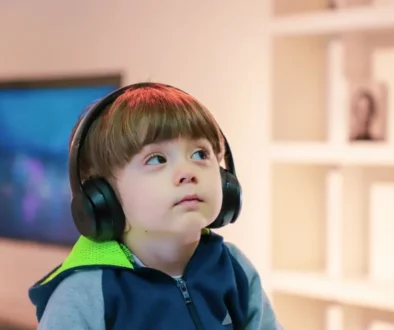Types of Learning Disorders and How to Identify Them
Around one in five children have a learning disorder in the USA. Learning disorders are becoming easier to spot thanks to the excellent research currently being conducted to find out more about them. If you’re in Texas and concerned about a learning difference in your child, there are plenty of resources available for you.
From ADHD to an autism diagnosis, being told your child has any sort of disorder is a worrying time. Recognizing some of the behaviors associated with these disorders early is helpful.
If you’d like to learn about the different types of learning disabilities and the easiest ways to identify them, keep reading below.
Dyslexia
Dyslexia affects how your child can read, speak, and write. One in every five people has dyslexia and it is one of the most common learning disorders in the USA.
Dyslexia tends to affect different people in different ways. Some may simply struggle with spelling or writing. Others may have a more severe level of dyslexia and struggle with every facet of written and spoken communication.
In the early years, a common sign of dyslexia is speech development developing more slowly than in other children. When your child reaches schooling age, you may find that they mix up certain letters, such as “b” and “d.” Understanding how and when words rhyme is another way to identify dyslexia.
Consistently misspelling words and failing to advance past particular reading grades are both common signs of dyslexia. A diagnosis is important as it helps your child to learn to read and write at a pace and level that is appropriate for them.
ADHD
Attention deficit hyperactivity disorder, commonly known as “ADHD,” is another common learning disorder. There are many symptoms of ADHD in children.
Firstly, you may find that your child is very fidgety. They are not able to remain still even in low-pressure environments. Their concentration may wane and flow between being extremely focused on a task to being unable to concentrate on anything for more than a few minutes.
While children are often active and excitable, if your child never seems to calm down they may have ADHD. This disorder is characterized by consistent hyperactivity.
You may notice that your child repeatedly interrupts conversations. This unfortunately often earns school-age children the reputation of being “disruptive.” With the right treatment plan, measures are taken to calm a child’s mind so that they are less prone to restlessness.
Dysgraphia
Dysgraphia is a learning disorder that disrupts a child’s writing. They may have difficulty with word spacing, spelling, and other written forms of communication.
A child suffering from dysgraphia may have handwriting that is very difficult to read. Written comprehension will be particularly difficult for children with this disorder.
A dysgraphia diagnosis can often surprise parents. This is because a child with dysgraphia is often able to communicate verbally. It is when they try to write that they struggle. It is frustrating for a child in school who is not advancing as quickly as their peers in written communication.
You may notice that your child will try to get out of any activity that involves holding or using a writing utensil. This is because the process of writing or even coloring is very stressful for a child with undiagnosed dysgraphia.
If your child has an unusual grip on their pen or pencil you may wish to have them assessed for dysgraphia. If left untreated, dysgraphia can often lead to organizational difficulty in teenagers and adults, so an early diagnosis is important.
Dyscalculia
Dyscalculia is a learning disorder that makes it difficult for a person to deal with and understand numbers. While math is an area that many people struggle with, this is generally not enough to result in a dyscalculia diagnosis.
In young children, there are several important signs of dyscalculia. The first is the accidental skipping of numbers during counting. They may also be unable to understand that a “spelled-out” number (such as “one”) is the same as its written value (“1”).
There are also some key signs in school-age children. They will likely be unable to remember even basic rules of calculation, such as 2+2=4. Repeatedly counting using the fingers is also a common sign, especially to do basic calculations.
DSM-5 Diagnostic Criteria
The DSM-5 describes the most recent factors needed to diagnose certain mental disorders. This includes neurodevelopmental disorder. It makes it easier for doctors to diagnose these disorders and to communicate with patients about them.
Another mental disorder covered in the DSM-5-TR is autism. While autism is not considered a learning disorder, in some cases a learning disorder diagnosis is accompanied by an autism diagnosis.
There are several different symptoms of autism in children. It is occasionally difficult to diagnose because it is based on a spectrum. However, if your child is non-verbal past a certain age or has difficulty maintaining eye contact, they may have autism.
If you are concerned your child may have autism, you can have this assessed by a dedicated team.
How Telemedicine Can Help You
Telemedicine has revolutionized the diagnosis of learning disorders in the past ten years. With it, your doctor is easily able to diagnose a learning disorder remotely. A treatment plan can also be made using technology.
Telemedicine offers a way for you to be in touch with the best doctors even if they’re out of state. This means you can receive advice and guidance for your child whenever you need it. If you want to get your child assessed for autism or a learning disorder in Texas, you’re now able to do this remotely thanks to telemedicine.
Learn More About Learning Disorders
Learning disorders don’t have to disrupt your child’s life too much. With the right treatment plan and care, your child can flourish as much as any other.
Knowing more about the signs of a learning disorder will help you put a treatment plan in place earlier. This plan is can be coordinated with your child’s education to make their life easier while they learn.
If you’d like to find out more about learning disorders and their various symptoms, contact the team of experts today. They can offer you advice and point you in the right direction to get an effective diagnosis.



